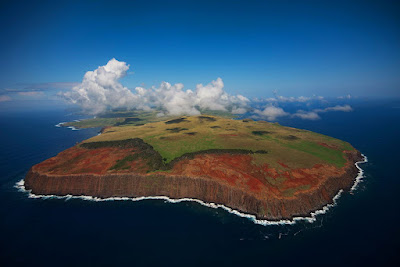The mystery of Easter Island begins with its statues, known as moai, which are scattered throughout the island. These moai are massive stone statues that were carved by the Rapa Nui people, who lived on the island between the 13th and 16th centuries. The moai range in size, with some standing up to 33 feet tall and weighing as much as 75 tons.
The creation of these statues remains a mystery. The Rapa Nui people did not have access to any technology or tools that could have been used to move such massive stones, and yet they somehow managed to transport them across the island. Theories about how they did this range from the use of ropes and wooden sledges to the implementation of a complex system of levers and pulleys.
Another mystery surrounding Easter Island is the downfall of the Rapa Nui civilization. At its height, the population of Easter Island is estimated to have been around 15,000 people. However, by the time Europeans arrived in the 18th century, the population had declined to just a few thousand. The reasons for this decline are still unclear, but theories range from environmental degradation caused by deforestation and overpopulation to the arrival of diseases brought by Europeans.
Despite the mystery surrounding the island, recent archaeological discoveries have shed some light on its past. In 2018, researchers discovered that the Rapa Nui people did not suffer from a lack of resources as was previously thought. Instead, they had a sophisticated system of agriculture that allowed them to thrive despite living on a small, isolated island. The Rapa Nui also had a complex social hierarchy, with chiefs who oversaw the creation of the moai and the construction of the island's impressive ahu platforms.
Today, Easter Island is a UNESCO World Heritage Site and attracts visitors from around the world who come to see its stunning natural beauty and ancient relics. The island's mysterious history continues to fascinate scholars and visitors alike, and research into its past is ongoing.
The mystery of Easter Island is a fascinating and complex one. From its massive stone statues to the downfall of its civilization, there is much that is still unknown about this remote island. However, recent discoveries have shed some light on its past and have helped to dispel some of the myths and misconceptions that have surrounded it for centuries. Despite the mystery that still surrounds it, Easter Island remains an important part of our world's history and a testament to the ingenuity and resilience of the human spirit.





.jpg)



0 comments:
Post a Comment